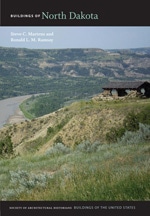
Modern health care architecture struggles to keep pace with patient-centered health care delivery. Though the exterior of this medical center has a somewhat institutional 1960s character, the interior north atrium space in the Dakota Clinic is among the more graciously composed interior settings and comparable to the Neuropsychiatric Institute near Fargo’s Island Park by the same architectural firm. Proportions of the north atrium invoke the memory of Frank Lloyd Wright’s demolished Larkin Building of 1906 in Buffalo, New York, and the open relationship between patient floors and plant-filled waiting spaces elicits the same comparison. The relaxed sense of patient support is quiet, reassuring, and introverted within a surrounding commercial setting that is fairly chaotic. There is balance to the indirect north light and material details of the brick and glass enclosure have been crafted in a late modernist manner, clarifying and facilitating patient movement.






